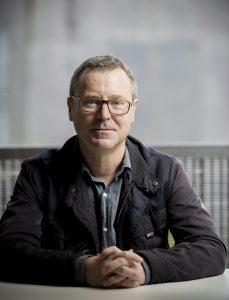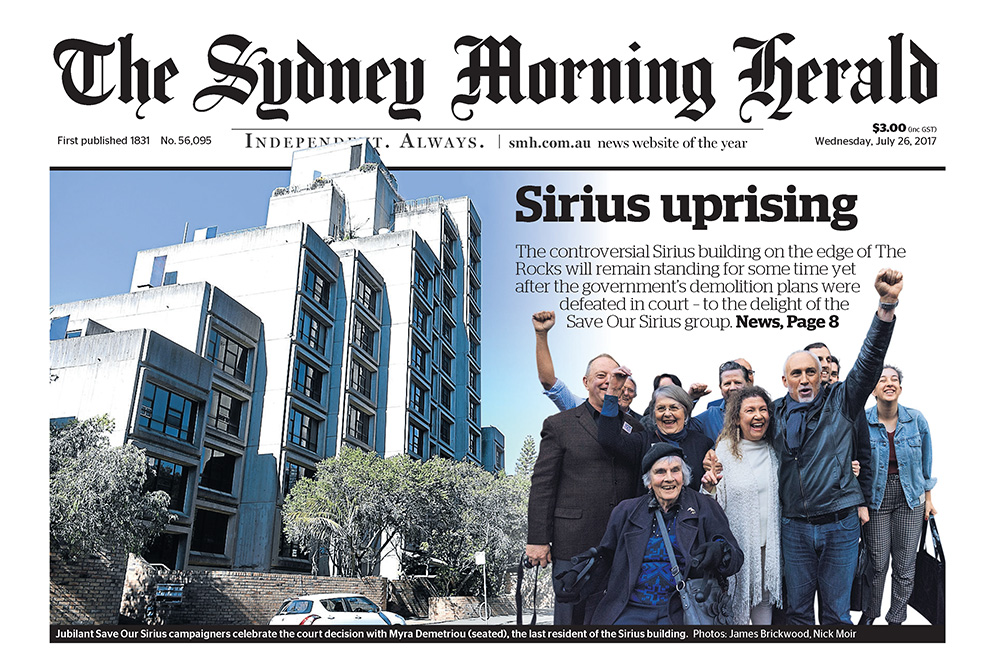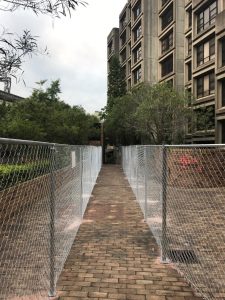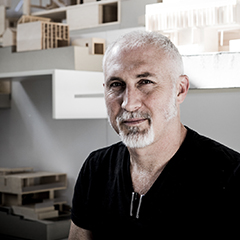The NSW Chapter of the Australian Institute of Architects’ celebrated prize winners of the 2017 Graduate and Student Awards on Friday 26 May, to a full house at a special event at the Institute’s Tusculum Centre in Sydney.
Established to acknowledge excellence in architectural scholarship, the annual Awards showcase the top student work across the four architecture programs in NSW – The University of Newcastle, The University of Sydney, University of New South Wales and University of Technology, Sydney.
Award categories include the First Degree Design Award, Architectural Technologies Award, Architectural Communication Award and the NSW Design Medal. In addition, a range of awards are presented to students who have excelled within their respective universities.
The state’s most prestigious honour, the NSW Design Medal, went to James Ellis of The University of Newcastle for his project “The Plant”, a brave proposal that demonstrated genuine research and innovation. In their report the jury stated that ‘The Factory’ was “an insightful solution to a very complex brief that explores an entirely new building typology – the Community Food Factory; an activist response to the way that modern food production has become disconnected and made invisible from modern society.”
Brendan Boyle, also a graduate of The University of Newcastle, was named Medal Runner-Up for his project “Re:Birth”. Presented with a site heavily modified by the intervention of an industrial past, Brendan’s proposal explored the tectonics and forms of 19th century industrial construction and reinterpreted the site giving it a new architectural expression with its own language of assembly and fragmentation.”
This year, the Jury also awarded two Commendations; the first to James Hargrave of the University of New South Wales for his project “Space // Between”. The project proposed to partially reinstate the natural shoreline and contours of the pre-development headland in East Balmain. New low-rise linear housing aligns with the new terracing that reinterprets the original topography.
The second Commendation was awarded to Boris Nikolov, Pareena Patel and Jennifer Strilakos, graduates of the University of Technology, Sydney, for their project “Foreshore Re-appropriate Organisation”. The Jury reported that the proposal explored a process that involved a proactive approach to public space making and re-appropriation of the foreshore.” More particularly, that the project distinguished itself setting new directions for our profession in how to strategically design within legislative restrictions and creatively work with policy and codes to transform customs that have prohibited new directions for public space.
In the First Degree Design Award, Penny Fraser of the University of New South Wales was awarded the top honours for her project “Earth and Sky”. She was followed closely by Runner-Up Adam Vandepeer from The University Sydney for his submission “Adagio”. The jury noted the high quality of submissions, and that the top projects were in fact competitive with those submitted for this year’s Medal.
The Awards are supported by Mirvac Design (Principal Partner), alongside fellow sponsors Bates Smart, Crone, EJE Architecture, FJMT, Jacobs and TURNER. The Institute’s NSW Chapter thanked the sponsors for their continued and vital support and noted the contributions as indicative of each sponsor’s long-term support for architectural education.
2017 Jury: Andrew Nimmo (Jury Chair, Lahznimmo Architects), Dr Karen Burns (The University of Melbourne), Deborah Hodge (Durbach Block Jaggers), Steve Koolloos (Marsh Cashman Koolloos) and Michael Wiener (Mirvac Design).
Australian Institute of Architects – NSW Graduate and Student Awards 2017
FULL LIST OF WINNERS
RAIA NSW Design Medal
Winner: James Ellis (The University of Newcastle)
Runner-Up: Brendan Boyle (The University of Newcastle)
Commendation: James Hargrave (University of New South Wales)
Commendation: Boris Nikolov, Pareena Patel and Jennifer Strilakos (University of Technology, Sydney)
RAIA NSW First Degree Design Award
Winner: Penny Fraser (University of New South Wales)
Runner-Up: Adam Vandepeer (The University of Sydney)
Commendation: Candace Chia-Ching Lee (University of New South Wales)
RAIA NSW Architectural Technologies Award
Winner: Timothy Qi Nan Li and Jianzhang James Wang (The University of Sydney)
Runner-Up: Sharon Cheuk Yao Cheong, Fook Hong Timothy Lee and Ho Hei Yick (The University of Sydney)
RAIA NSW Architectural Communications Award
Winner: James Hargrave (University of New South Wales)
Runner-Up: Rachel Wan (University of Technology, Sydney)
Commendation: James Ellis (The University of Newcastle)
THE UNIVERSITY OF NEWCASTLE (Sponsored by EJE Architecture)
Construction and Practice Prize: Jade York
History and Theory Prize: Dianne Gardoll
First Degree Graduate of the Year Prize: Corenne Earl
Masters Graduate of the Year Prize: Brendan Boyle
UNIVERSITY OF NEW SOUTH WALES (Sponsored by FJMT)
Construction and Practice Prize: Joshua Sleight
History and Theory Prize: Sharryn Bowman
First Degree Graduate of the Year Prize: Joshua Sleight
Masters Graduate of the Year Prize: Jessica Gottlieb
THE UNIVERSITY OF SYDNEY (Sponsored by Jacobs)
Construction and Practice Prize: James Boden
History and Theory Prize: Pascale Roberts
First Degree Graduate of the Year Prize: Janelle Woo
Masters Graduate of the Year Prize: Mitchell Page
THE UNIVERSITY OF TECHNOLOGY, SYDNEY (Sponsored by Crone)
Construction and Practice Prize: Adam Donbauer
History and Theory Prize: Andrea Lam
First Degree Graduate of the Year Prize: Calum York
Masters Graduate of the Year Prize: Michelle Vassilou







